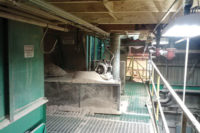I changed my mind in 1989 when I began using behavior-based risk identification. My experience since then has taught me that site personnel--from managers to the general workforce--do not have a good understanding of risk. Take another look at risk using a behavior-based perspective.
Pointing fingers
Managers and workers tend to jump to conclusions about why an injury or accident occurred before an investigation determines the primary cause.When managers hear about an accident, they assume someone did something stupid.
If my son gashes his finger cleaning out the garage, before I think of his pain it's almost a natural reflex to wonder: What dumb thing did he do now? If he would only pay attention to what he's doing!
Workers have reflexive responses to accidents too. They tend to blame conditions or management systems. For example: "He injured his back because those bags are too heavy." Or, "If they had waited to start up the production line until after shift change, she wouldn't have been rushing."
Consider again the scenario of my son hurting his finger. He might have thought, "If dad hadn't woken me up so early, I would have been paying better attention. Why doesn't he buy me some gloves to protect my hands?"
Valid points? Could be. But initially they're only assumptions. In most cases, there's a chain of causes leading to an injury. We need to identify the root cause to figure out when we are at the greatest risk for injury. If it's inattention, we need to find out why an employee would not be paying attention.
Risky business
Working in a hazardous area does not mean you'll get hurt. It means you need to know and recognize hazards and then pinpoint related at-risk behaviors.I worked in a chemical plant that produced a pyrophoric liquid that ignites on contact with air and chemically reacts to moisture. That chemical was very hazardous to work around. But operationally the plant was very safe. I worked there 10 years without injury.
It's obvious that pyrophoric liquid is a hazardous material. But exactly what task-related behaviors put personnel at risk when working with it?
Plan ahead
I've asked co-workers, "When do you feel you're at the greatest risk for injury?" Responses fall into three categories:1. Doing a new or unfamiliar task.
2. When I hurry.
3. When I'm not paying attention to the task at hand.
Apply this knowledge to an off-the-job project: Recently I installed a redwood fence in my backyard. I had never erected a fence before, so I identified potential hazards and related behaviors to avoid injury:
On-the-job challenges
To address the variety of factors affecting worksite risk, you need to go the extra mile with risk assessment. Most risk hazard programs analyze conditions and avoid looking at behaviors. You must focus on behaviors and how those behaviors address conditions.I recommend implementing a behavioral observation process that provides basic behavioral observation skills for all employees, thorough review of previous injuries, and a data gathering system.
The knowledge that the workforce can gain from a behavioral safety process can make a significant impact on safety. Personnel who work safely usually exhibit a cluster of behaviors no less crucial to safety because they seem small.
With a behavior-based approach, safety becomes a skilled activity for a work group. You can see it from a distance. If you had observed me working with pyrophoric liquid, for instance, you would have seen me wearing the correct personal protective equipment and standing to the side when sampling.
You can teach workgroups to measure their own safety performance. Give newcomers a short list of very specific things they should do to avoid exposure to risk. Show veteran personnel what safe behaviors they're performing.
Once safety is considered a skill, managers don't have to spend precious time talking to workers about their attitude or thinking up fresh ways to motivate them. A good safety attitude automatically follows routinely used safe behavior.
Injury rates in the chemical industry have been greatly reduced over the years. Making that next significant reduction is a challenge. Applying a behavior-based approach to your risk assessment procedures is the key to success.


